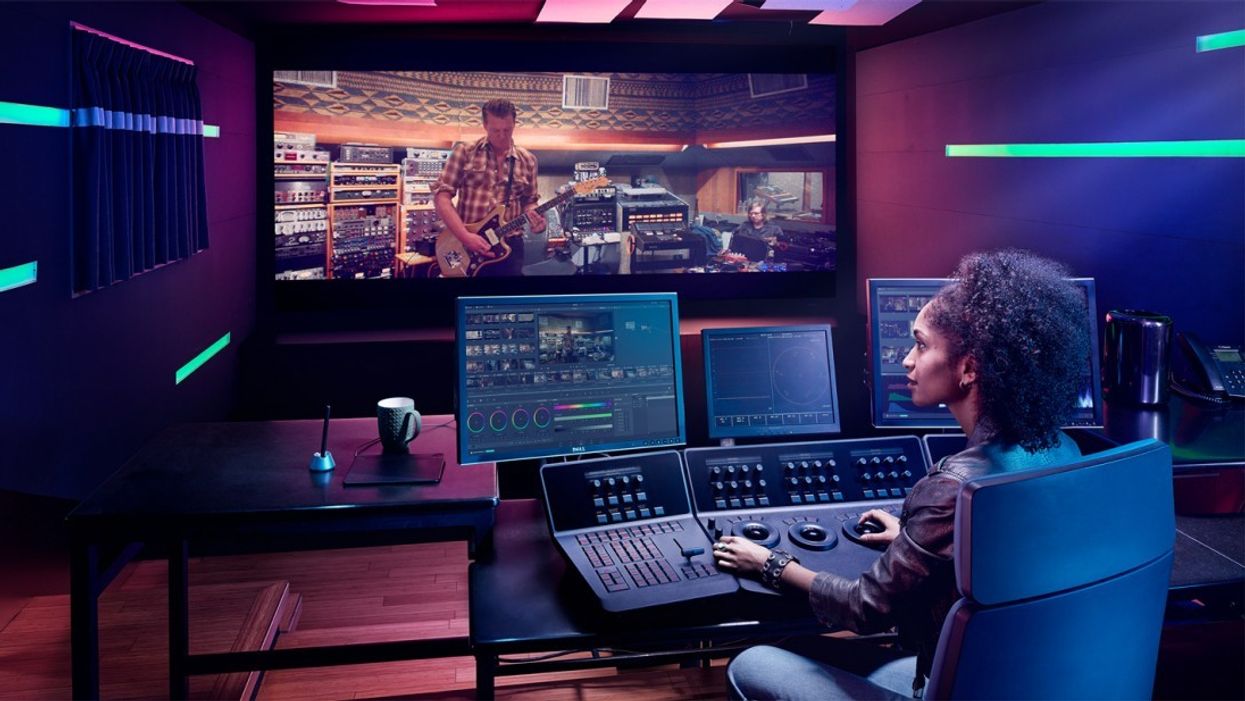5 Useful DaVinci Resolve 14 Features You Might Not Have Noticed
We discovered five exciting features of Resolve 14 that haven't received much attention. Until now.

Several major features of Blackmagic Design's DaVinci Resolve 14 have received a lot of attention in the press this year: shared user workflows, integrated digital audio workstation with Fairlight, automated face recognition, and tracking. Now that the software is finally out of beta, we noticed a host of other features that we thought deserved a mention. Here are five new unsung features that make Resolve 14 worth a look.

1. Color Compressor
Color Compressor is one of those tools that is probably useful for a wide variety of things, but has one such clear and obvious use that it is surprising they didn't just call it "skin tone smoother." If you have a performer who has irregular skin tone, perhaps blotchy cheeks from exertion or some other imperfection, Color Compressor is going to be a useful tool. It allows you to select a group of colors and then "compress" them all together into one color. Grab the person's face with the red splotchy cheeks, compress it all together to "skin" color and away you go.
Technically, you could do a selector just for the red splotches and then push them over to match the rest of the skin, but it's always been tricky to do so and the likelihood for artifacts is high. With Color Compressor, a larger, cleaner key of the whole person can be selected, then the colors are smooshed together. You might use it for many things, but we'll always think of it as the splotch remover.
Dead Pixel Fixer in DaVinci Resolve 14.Credit: Blackmagic
2. Deband & dead pixel repair
There have always been some workarounds for fixing dead pixels in Resolve, but generally dead pixels, blotches and banding have been fixed better in other applications. As Blackmagic starts to focus heavily on keeping its users in Resolve for as many functions as possible, it's good news to have a dedicated tool for banding and dead pixel repair. I can't tell you the number of times I've had clients ask about this very feature, and the ability to do it in a snap—instead of saying "Oh, lemme try something, but if it doesn't work, you'll need to go to an effects artist"—is a huge relief.

3. Sharpening tool improvements
The sharpening tool in Resolve has always been a bit of a blunt instrument, with a slider that can be split off via RGB or YUV, but no real control on the element size of what you want to sharpen. This can be particularly frustrating since Resolve's shapes and trackers are so powerful, which makes Resolve a natural platform for correcting focus problems in footage. With Resolve 14, Blackmagic has finally provided the option to apply sharpening to small, medium, and large details, which should make it easier to give that last bit of focus to a performer's eyes on the perfect take where the focus was just a hair soft—without some of the artifacts from earlier sharpening tools.

4. Warper
The danger with a tool like Warper is the idea that it can do more magic that it actually does. You won't be able to realistically rewarp your entire frame and have the final footage look pleasing. However, having the ability to drop anchor points in the frame and do small warp tweaks will be useful in tons of small ways. The simplest application will be items like stabilization or reframing, where you need the frame to stretch a tiny bit farther in a given direction. Provided the edge of the image is stretchable (like a wide open sky), you can stretch out that part of the frame to give yourself more zoom room. You'll even be able to add some distortion to elements like trees and buildings and get away with it. However, with objects with known sizes, like cars and people, the tool will be more limited, and the interaction between warp and movement can cause some distracting artifacts. So, do a ton of testing before promising a client that you can use warp to make actors seem taller than they actually are.

5. Fairlight Audio Accelerator
This is actually a bit of hardware, and it's not cheap, but it's a huge piece of news that somehow hasn't received the attention it deserves. Along with everything else, Blackmagic has released a hardware accelerator that you can plug into your system and will support up to 1,000 tracks of audio playback in Fairlight. 1,000 for $1,000, if you like. This is a necessary step for Fairlight to really compete against ProTools (which is a tremendous uphill battle that will take a long time, considering the deep investment).
If you are an editor considering the switch to Resolve, Blackmagic put together a helpful video that should make the transition mostly painless.
Resolve 14 is available for free download at Blackmagic's website, though admittedly the tools discussed above will largely require Studio, which is $299. Full disclosure, we took a "Train the Trainer" class in August here in New York and found it a great way to get a broad knowledge on the new capabilities of the software. Blackmagic will also be releasing a new book on version 14 on Amazon if you can't swing a classroom training session.

 "'Back Home"via Mercedes Arutro
"'Back Home"via Mercedes Arutro 'Back Home'via Mercedes Arutro
'Back Home'via Mercedes Arutro 









